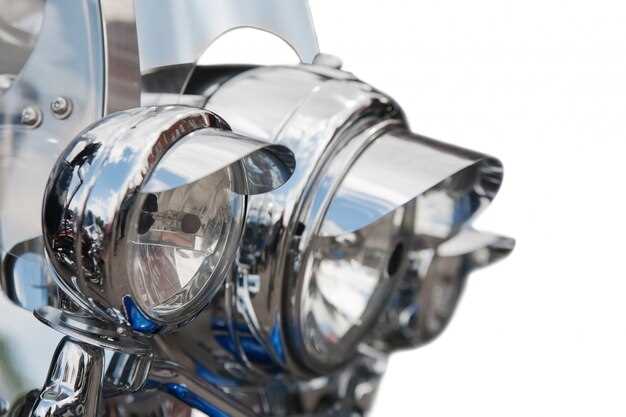
In the world of motorsport, every millisecond counts. The ability to shift gears rapidly and efficiently can mean the difference between victory and defeat. This is where the sequential gearbox comes into play, revolutionizing the way race cars transition between speeds. Unlike traditional gearboxes that employ a more complex shifting mechanism, the sequential gearbox streamlines the process, allowing drivers to change gears in a linear, straightforward manner.
The mechanics of a sequential gearbox are designed for quick engagement, enabling the driver to pull or push a lever to change gears without the need for a clutch in many cases. This design not only simplifies the shifting process but also enhances the driver’s concentration on the track, as they no longer need to manage clutch control during high-stress situations. Such efficiency is crucial in maintaining optimal engine performance and maximizing acceleration, especially in competitive racing scenarios.
Race teams invest significant resources in developing and fine-tuning these sequential gearboxes, often utilizing lightweight, durable materials that contribute to the overall performance of the vehicle. The integration of advanced technology, such as electronic paddle shifters, further elevates the speed of gear changes, allowing for instantaneous responses to the driver’s inputs. As a result, the marriage of technology and engineering in sequential gearboxes continues to shape the landscape of professional racing, enabling cars to achieve unprecedented levels of speed and control.
Understanding the Mechanics of a Sequential Gearbox

A sequential gearbox represents a significant advancement in automotive transmission systems, particularly for race cars. Unlike traditional manual gearboxes that utilize a H-pattern for gear shifting, a sequential gearbox allows for quick and precise gear changes in a linear sequence. This design eliminates the need for complex gear selection mechanics, thus enabling faster shifting times essential for high-performance racing.
The core principle behind a sequential gearbox lies in its reliance on a set of dog gears. When the driver applies pressure to the gear lever, a mechanism engages the selected dog gear, which links directly to the output shaft. This direct engagement reduces the time spent in between shifts, as there is no need to move the lever through various positions, allowing for smoother and more efficient gear changes.
A critical element of the sequential gearbox is its actuator system, which can be mechanical or electronic. Modern race cars often utilize electronic actuators that respond to driver inputs at lightning speed. These actuators enable rapid shifting with minimal delay, significantly enhancing performance on the track. Furthermore, many systems incorporate paddle shifters mounted on the steering wheel, allowing drivers to maintain control without removing their hands from the steering wheel.
The design of the gearbox also influences the overall durability and reliability during high-stress racing conditions. Sequential gearboxes are built with high-strength materials and are often designed to withstand extreme torque loads, which is a necessity in competitive racing environments. Additionally, the simplicity in design leads to fewer moving parts, reducing the likelihood of mechanical failure while maximizing the gearbox’s lifespan.
In summary, the sequential gearbox combines innovative engineering with functionality, enabling race cars to achieve exceptionally quick gear shifts. Through its linear shifting mechanism, dog engagement, and advanced actuator systems, it plays a crucial role in enhancing a race car’s performance and overall driving experience.
Techniques Used by Drivers for Optimal Shifting Speed

To achieve lightning-fast gear changes, drivers employ a combination of techniques that maximize the efficiency of their gearbox. One primary technique is known as “rev-matching,” which involves synchronizing the engine speed with the gearbox speed during downshifting. This ensures a smoother transition and helps prevent wheel lock-up caused by sudden torque changes.
Another method is the use of “short shifting,” where drivers change gears at lower RPMs to maintain a balance between acceleration and engine response. This technique allows for quicker shifts while reducing the strain on the gearbox, thus enhancing overall performance.
Additionally, many drivers utilize paddle shifters, which provide instantaneous gear changes without the need to take their hands off the steering wheel. This technology allows for seamless shifting, enabling drivers to focus more on maintaining control of the vehicle at high speeds.
Some experienced drivers also practice “clutchless shifting,” a technique that allows them to change gears without fully engaging the clutch. This requires precise timing and understanding of the gearbox’s mechanics, but it can significantly reduce shift times.
Lastly, consistent practice and familiarization with the car’s specific gearbox characteristics are essential. Drivers often spend hours honing their technique to adapt to the unique shifting dynamics of their vehicle, ensuring they can capitalize on every opportunity for optimal performance on the track.
Impact of Gear Change Timing on Race Performance
The timing of gear changes plays a crucial role in the overall performance of a race car. In competitive racing, every millisecond counts, and a well-timed gear change can significantly enhance a vehicle’s acceleration and top speed.
Modern race cars often utilize a sequential gearbox, which facilitates rapid shifts without the need for a clutch pedal. This system allows drivers to execute gear changes with precision and speed, but the effectiveness of the gearbox is highly dependent on timing. A delayed or premature shift can disrupt the vehicle’s power band, leading to a loss of momentum.
Optimal gear change timing means aligning shifts with the engine’s power curve. Each engine has a specific RPM range where it produces maximum power, and shifting gears at the appropriate moment ensures that the car remains in this power band. For instance, shifting too early may cause the engine to drop out of its power band, ultimately slowing down the car.
Moreover, the driver’s skill in anticipating the right moment to shift is equally important. Experienced drivers can read the track conditions and understand how their car’s performance might change throughout a race. This knowledge allows them to adjust their shift timing dynamically, maximizing their speed while navigating corners and straights.
In summary, the impact of gear change timing on race performance cannot be overstated. A proficiently calibrated sequential gearbox combined with precise timing can make the difference between winning and losing, highlighting the critical balance between the mechanical capabilities of the car and the driver’s intuition.




